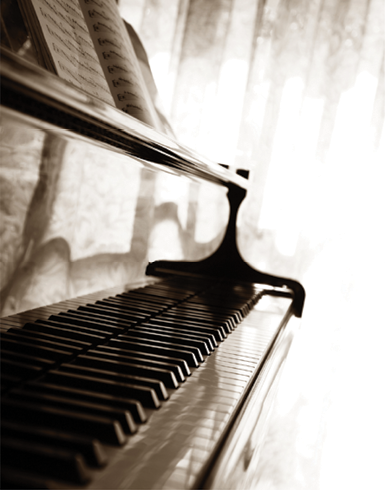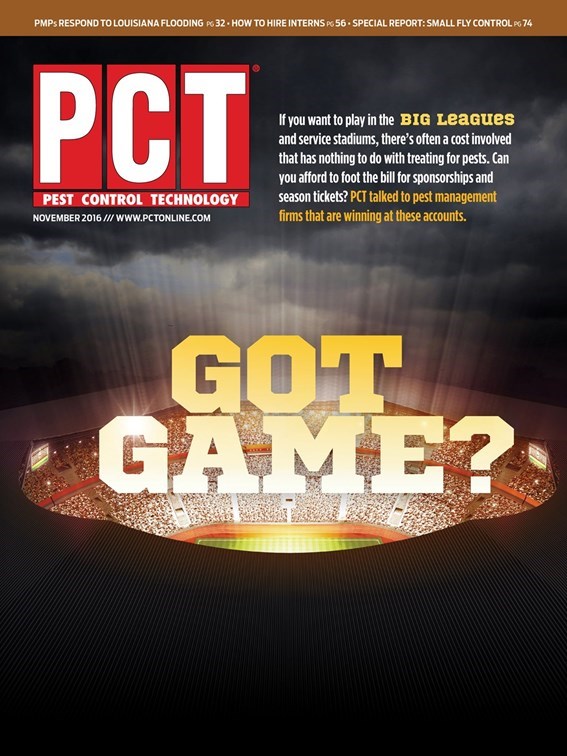
To a pest control operator, a piano presents a difficult and intimidating problem. Pianos are often expensive; occasionally holding an emotional attachment for the customer; and always filled with complex parts made of wood, metal and plastic that are sensitive to disturbances. Pianos also provide excellent harborage for some pests such as rodents and roaches and can be infested with wood- and wool-destroying pests, such as furniture beetles and clothes moths.
A piano in a client’s home — or in a hotel or restaurant — should not be ignored. However, it also must be approached carefully. Ideally, a qualified piano technician should inspect and treat pests in and around pianos, but there are very few piano technician/pest control operators. Second best would be an informed pest control technician with appropriate treatment techniques.
INSPECTION. One problem in examining any piano typically will be the many decorations and music paraphernalia adorning the instrument. You should ask the customer to remove these, especially anything that is delicate/fragile. Some grand pianos may be covered with a fitted blanket or piano cover that should be rolled off and folded to be replaced after inspection.
The greatest trouble sites for pianos are the spaces under the keys, which are excellent rodent nesting sites and a safe location for wool pests. However, these areas can be accessed only by an experienced piano technician. The best treatment is a thorough vacuuming of debris and pest residue and replacement of any eaten or damaged felts, again best left to a qualified piano technician.

There are two general types of pianos: grands and verticals. The construction of the vertical piano creates many access and harborage spots, while grand pianos are typically supported on three legs and are much less accessible to wandering pests (though any experienced piano technician will have a few grand piano pest stories).
VERTICAL PIANOS. Vertical pianos are usually short spinets (under 45 inches tall), consoles (about 45 to 50 inches) and uprights (typically pre-WWII and up to 60 inches). Most vertical pianos have the same basic construction and access points. The top lid lifts up and folds over (a few will lift from the right like a grand piano). This allows a flashlight inspection of the parts and keys. If the piano is one of the old player pianos which were made until about the 1970s, you may see a mass of hoses, tubes and bellows. In a regular piano, the mechanical parts and keys should be visible. The front panel might easily lift up and off or pull forward, but be careful about not damaging the wood or finish. Nearly every piano is slightly different.
The lower part of a vertical piano is covered by a bottom panel. Usually this is held in place by one or two simple retaining springs that can be pushed up with thumb pressure. Older pianos might have a simple rotating wood bar that allows the bottom board to be pulled forward. Often you can access enough of the bottom area by pulling the bottom board forward and peering through the sides. The entire panel usually is lifted up off of two pegs or pins or out of a simple groove. Removing the panel might involve passing it sideways between the legs or it might pull straight forward for removal. Don’t pull the panel too far forward as this could splinter or crack the bottom board at the retaining pegs on the bottom.
In the space at the bottom of a vertical piano, you often will find spider, insect or rodent evidence. On the lower far right or left, there often is a gap or opening seemingly designed for easy access to the piano by rodents. Don’t be fooled by a few old droppings or webs, as the piano may not have been inspected or cleaned in many decades. While spiders may be indicators of insect activity, they are usually harmless and only annoying pests.
GRAND PIANOS. Grand pianos are similar except for their length, which can be from 4 feet, 2 inches to more than 9 feet. Almost all modern grand pianos are accessed the same way: by lifting and folding over the front lid, then lifting the entire lid and supporting it on its lid prop (on the right side of the piano facing the keyboard). With the lid up you can inspect the flat sound-board area for rodent evidence.
There is a music desk that typically pulls forward and slides off, or it may lift off of rails at a notched point on the supporting guide rails. With the music desk removed, you can peer into the mechanism for evidence of insect or rodent activity.
TREATMENT. Most pest problems in musical instruments can be remedied with repellents, such as moth balls or closed space fumigants. In tests in my shop I have not seen any corrosive effects from the active ingredient of a dichlorvos strip after many months of close contact.
In vertical pianos, safe points to place portions of a dichlorvos strip are in the corners of the bottom area (under the pedal bars or rods) or near (not on) the keys on the far right and left side of the upper area.
There are several openings in a vertical piano that easily can be sealed with a strip of wide masking tape to increase the efficiency of the fumigant. The bottom board typically has a 1-inch gap along its top edge, and there may be gaps or spaces near or above the key cover.
The typical rodent access point along the bottom rear portion of a vertical piano might require installation of a wood block, but this is best left to a qualified piano technician.

WOOD-BORING PESTS. In areas of the country that have common wood-boring pests, you may find evidence of beetle larvae or even termite frass. In rare cases, termite tubes can extend up from floor boards to reach the piano legs or case body.Surfaces on the outer case of a piano are usually finished, so the use of borates or penetrating pesticides is limited. The mechanical wood parts of a piano are rarely infested, though the soft wood of the keys may harbor some larvae. Piano keys are unfinished and can absorb borates. The use of borates may be adequate as they are typically not corrosive to copper, steel or iron, though borates are corrosive to aluminum.
In serious infestations, the piano may need to be transported to a treatment facility for fumigation with a product such as sulfuryl fluoride. Treatment could occur in a sealed trailer or in a warehouse environment covered by appropriate tarps. I know of no reports of damage caused directly by fumigation treatment, though storage in a facility or transportation could result in humidity damage. Vertical pianos can be moved if this is done carefully. The front legs on many smaller home pianos tend to be fragile and should not be rolled across carpeting. A grand piano should never be disassembled or transported except by a licensed/bonded piano moving service. Heat treatments on pianos are not recommended as glue-joint or sound-board damage could occur. If you perform general heat treatment of household products, expect the piano to require re-tuning afterward, and your contract should reflect that.
For the most effective pest control, coordinate your treatment with an experienced piano technician who can perform a more complete inspection and can safely remove any remaining pest residues or repair any damage. Though there is no legal licensing for piano technicians in the U.S., the Piano Technicians Guild tests and certifies technicians and a Registered Piano Technician (RPT) is your best assurance of a competent technician.
Editor’s note: Editor’s note: For a photo review of what to look for when inspecting pianos, visit “online extras” at www.pctonline.com.
The author is registered piano technician who also has a master’s degree in biology.

Explore the November 2016 Issue
Check out more from this issue and find your next story to read.
Latest from Pest Control Technology
- SiteOne Hosts 2024 Women in Green Industry Conference
- Veseris Celebrates Grand Reopening of the Miami ProCenter
- Rollins' 2024 Second Quarters Revenues up 8.7 Percent YOY
- Fleetio Go Fleet Maintenance App Now Available in Spanish
- German Cockroach Control Mythbusting
- Total Pest Control Acquires Target Pest Control
- NPMA Workforce Development Shares Hiring Updates
- Certus Acquires Jarrod's Pest Control





